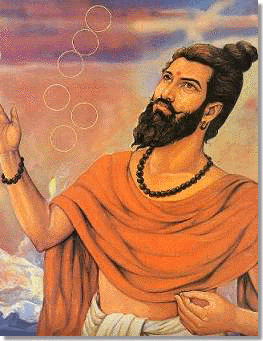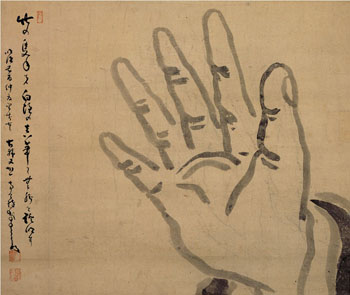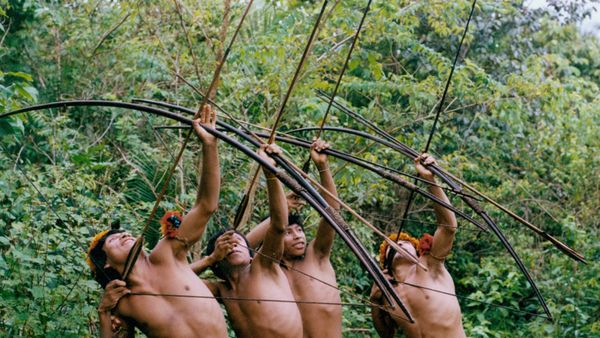 Kanada, like the country but with a K, is the founder of the Vaisheshika school and his name means one who eats grain, but it could also mean one who gathers particulars or particles into larger groups, and he was one of the first atomists and logicians in human history. He is also known as the Owl (Uluka). Legend has it that he was so ugly in appearance that he frightened young women, so he only ventured out at night, sneaking into granaries to eat corn and rice grains/particles. Another story is Shiva taught him in the form of an owl. Vaisheshika also means particular, but also particle, atom, particular, special, specific, and distinction.
Kanada, like the country but with a K, is the founder of the Vaisheshika school and his name means one who eats grain, but it could also mean one who gathers particulars or particles into larger groups, and he was one of the first atomists and logicians in human history. He is also known as the Owl (Uluka). Legend has it that he was so ugly in appearance that he frightened young women, so he only ventured out at night, sneaking into granaries to eat corn and rice grains/particles. Another story is Shiva taught him in the form of an owl. Vaisheshika also means particular, but also particle, atom, particular, special, specific, and distinction.
 Gautama’s Nyaya school, who study logic and debate, borrowed much from Kanada’s Vaisheshika school, who more study cosmology and how nature works. Aristotle studied both these subjects in Athens just after Kanada and Gautama, and like Aristotle, Kanada and Gautama were particularly focused on inherence, how individual particular things are gathered into groups in the world, and inference, how our minds draw logical conclusions from these groups. For example, both Gautama and Aristotle likely argued, whether or not they wrote the works associated with their names, that if something is a cow, then it certainly has four feet and horns, like an ox but unlike a bird. Kanada and Gautama’s texts argue that all cows have dewlaps, the hanging skin found in the neck-folds of sacred Indian cows.
Gautama’s Nyaya school, who study logic and debate, borrowed much from Kanada’s Vaisheshika school, who more study cosmology and how nature works. Aristotle studied both these subjects in Athens just after Kanada and Gautama, and like Aristotle, Kanada and Gautama were particularly focused on inherence, how individual particular things are gathered into groups in the world, and inference, how our minds draw logical conclusions from these groups. For example, both Gautama and Aristotle likely argued, whether or not they wrote the works associated with their names, that if something is a cow, then it certainly has four feet and horns, like an ox but unlike a bird. Kanada and Gautama’s texts argue that all cows have dewlaps, the hanging skin found in the neck-folds of sacred Indian cows.
 Kanada argued there are many objects of knowledge, including substances such as air, water, fire, earth, ether, time, space, self and mind, composed of particles or atoms that are eternal and uncreated, and thus can’t be created or destroyed, attributes such as quality (color, texture, odor, taste) and quantity (number, measure, distinction, conjunction, disjunction), actions (karma) such as kicking someone, they feel pain and you are later reborn a cockroach, generals, such as the group of all cows or rainstorms, particulars, such as individual cows or rain clouds, inherences, the individual cow having four feet or the rain cloud leading to rain, and emptiness, non-being and types of absence.
Kanada argued there are many objects of knowledge, including substances such as air, water, fire, earth, ether, time, space, self and mind, composed of particles or atoms that are eternal and uncreated, and thus can’t be created or destroyed, attributes such as quality (color, texture, odor, taste) and quantity (number, measure, distinction, conjunction, disjunction), actions (karma) such as kicking someone, they feel pain and you are later reborn a cockroach, generals, such as the group of all cows or rainstorms, particulars, such as individual cows or rain clouds, inherences, the individual cow having four feet or the rain cloud leading to rain, and emptiness, non-being and types of absence.
 Kanada argues action belongs to one substance, not many. It is very possible that, in opposition to this theory, the Buddhist sound of one hand clapping is a counter example to this. While the Zen koan has value as a contemplation device, it is also contemplating the impossibility of sound, an action, being produced exclusively by one thing but rather by the desire to clap, two hands, the air as medium, and everything situated together, what Buddhists call codependent arising. Kanada argues that sound is caused and therefore it is impermanent. This could be a subtle critique of the oral Vedic tradition, promoting philosophy and science as a route to the divine and objective, beyond traditional Hindu devotional practices.
Kanada argues action belongs to one substance, not many. It is very possible that, in opposition to this theory, the Buddhist sound of one hand clapping is a counter example to this. While the Zen koan has value as a contemplation device, it is also contemplating the impossibility of sound, an action, being produced exclusively by one thing but rather by the desire to clap, two hands, the air as medium, and everything situated together, what Buddhists call codependent arising. Kanada argues that sound is caused and therefore it is impermanent. This could be a subtle critique of the oral Vedic tradition, promoting philosophy and science as a route to the divine and objective, beyond traditional Hindu devotional practices.
 Kanada also argues in the Vaisheshika Sutra that things move downward naturally, so things must have additional causes or forces to move sideways or upward. For example, Kanada says smoke shows additional energy, as it has fire in it and fire moves upward, and water moves upward by sun and fire in it, collects in clouds, the fire is released as lightning, and the water comes downward in cycles. He argues that the arrow flies first from cause and then from an inherent tendency to remain in motion, similar if not identical to Newton’s concept of inertia.
Kanada also argues in the Vaisheshika Sutra that things move downward naturally, so things must have additional causes or forces to move sideways or upward. For example, Kanada says smoke shows additional energy, as it has fire in it and fire moves upward, and water moves upward by sun and fire in it, collects in clouds, the fire is released as lightning, and the water comes downward in cycles. He argues that the arrow flies first from cause and then from an inherent tendency to remain in motion, similar if not identical to Newton’s concept of inertia.
